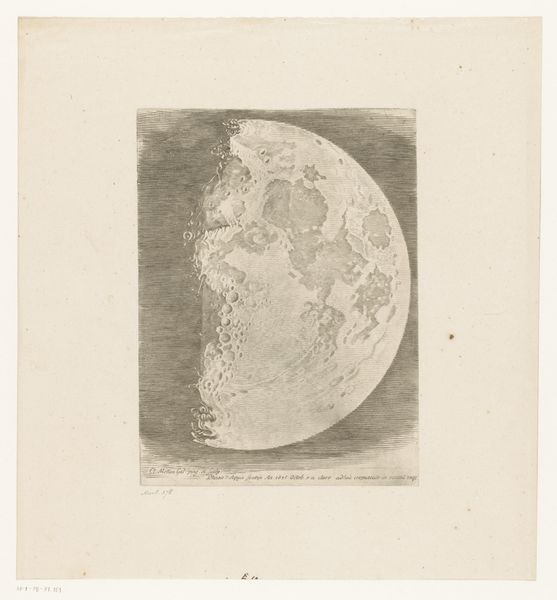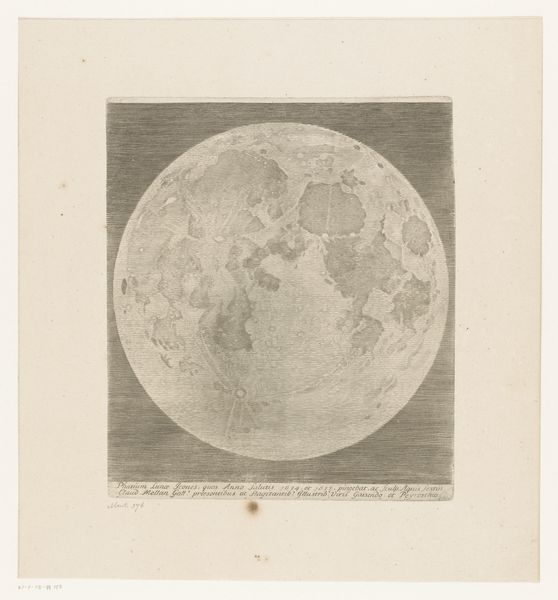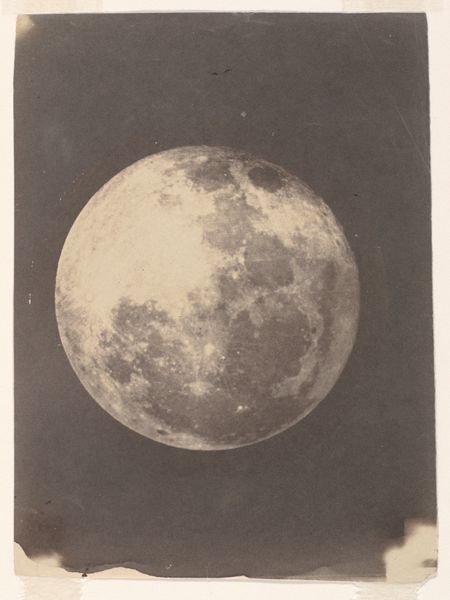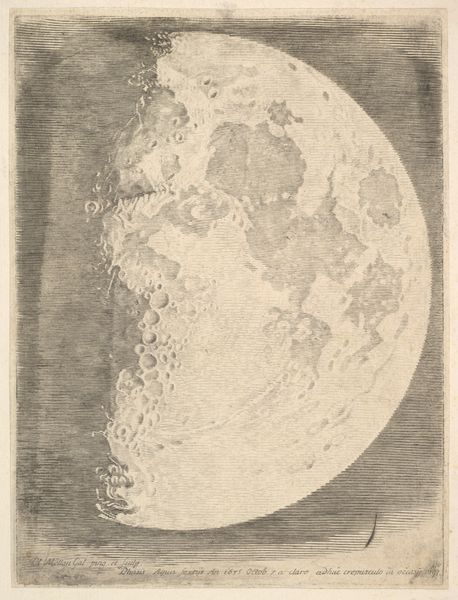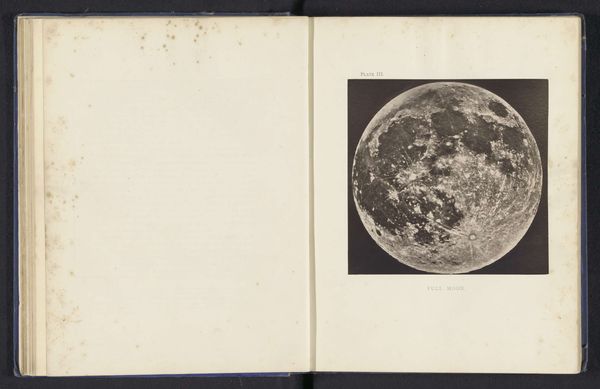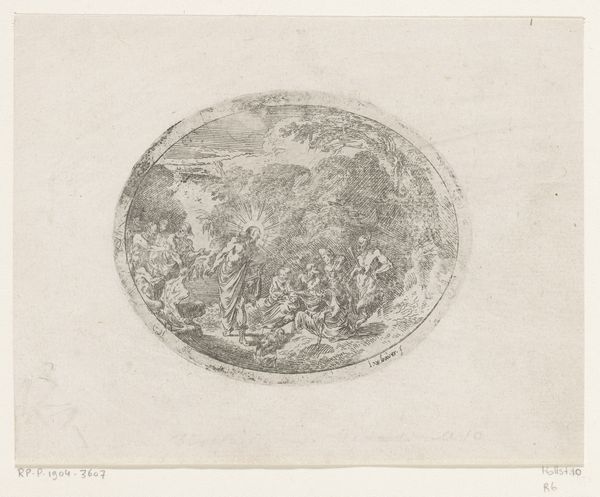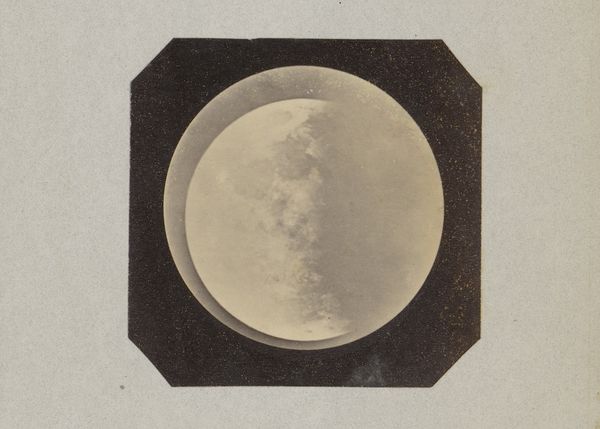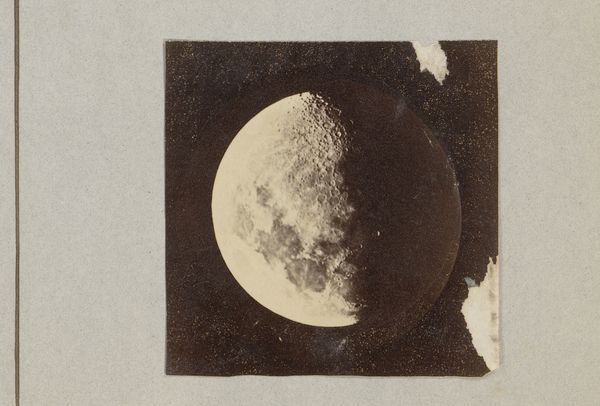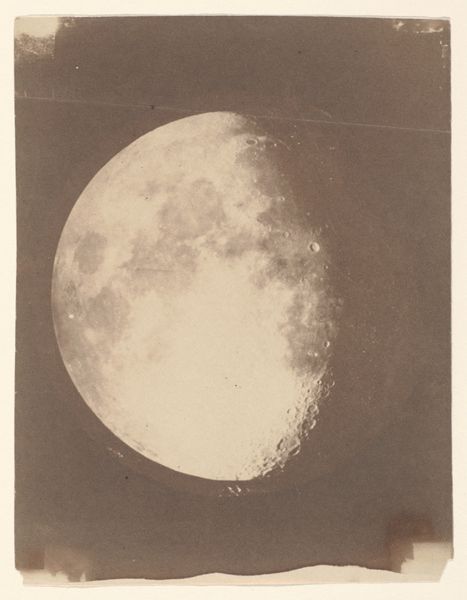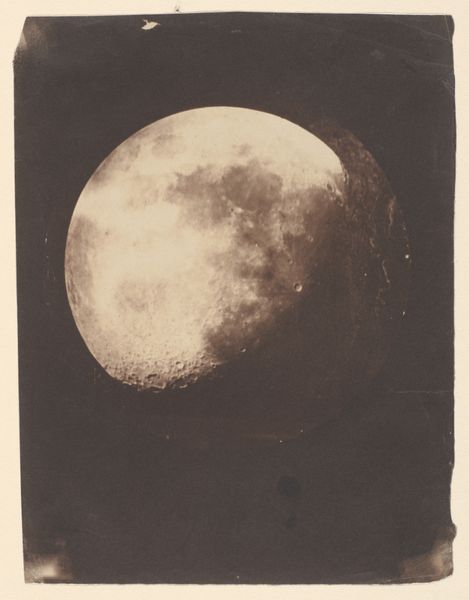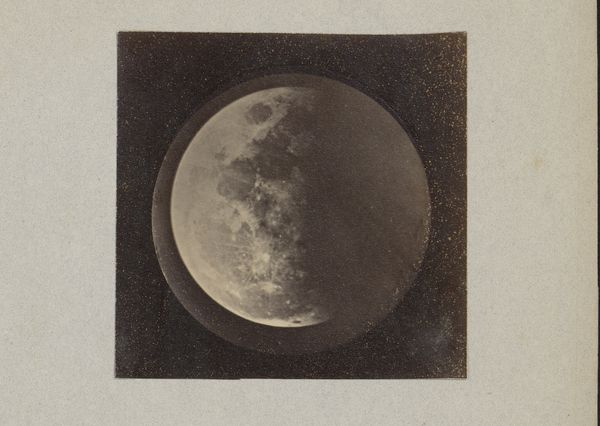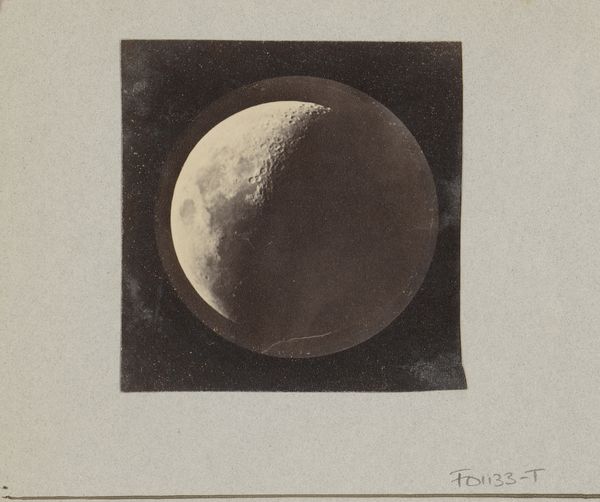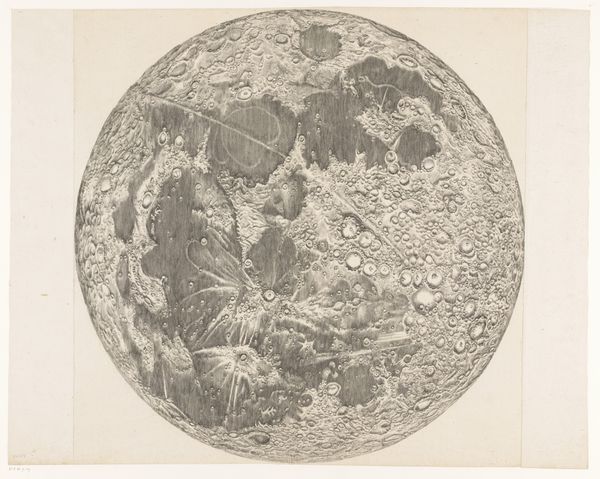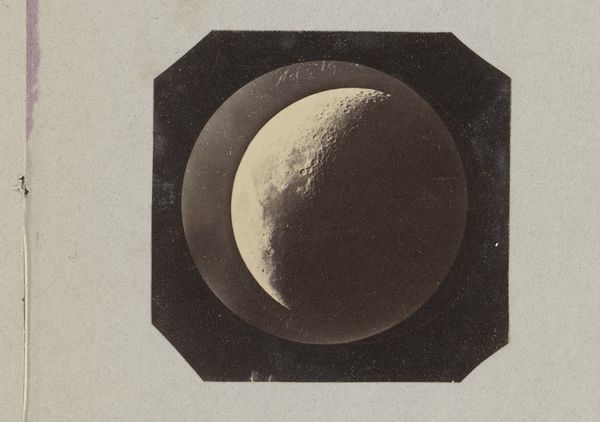
drawing, print, etching
#
drawing
#
baroque
# print
#
etching
#
landscape
#
geometric
#
line
Dimensions: height 230 mm, width 131 mm
Copyright: Rijks Museum: Open Domain
Curator: Ah, another voyage to the moon, albeit a vintage one! We're looking at Claude Mellan's "Laatste kwartier van de maan," etched sometime between 1635 and 1688. A little slice of lunar drama. Editor: It’s moody, isn’t it? Somber even. All that darkness surrounding a pale, cratered surface… It’s got a strangely unsettling presence for such a simple image. Curator: Simple is not exactly how I would characterize the technical skill on display here. Notice the intricacy he manages to achieve. It is a drawing, but also a print: etching on paper using delicate line work that makes it geometric, almost architectural. Editor: Yes, that commitment to the single line, or varying its weight ever so slightly. I can see how that creates volume on the orb. Also I think it speaks to a scientific mindset that was emerging at the time, that desire to dissect and map every visible feature. Curator: Indeed. Etchings allowed for multiple reproductions, expanding accessibility and spreading ideas rapidly. Mellan might have wished that many people had access to that subject and also, keep in mind, this predates photography by a fair bit. Editor: And thinking about it in relation to the time, this last quarter of the moon hovering in isolation might reflect the baroque obsession with mortality, like a skull on a celestial scale! Curator: I never looked at the moon like that. A momento mori written across the night sky. Though I’m drawn to the way that limited palette pushes my eye to discern texture in the dark areas. This sense of three-dimensionality emerges where flat tones otherwise dominate. Editor: Right, those gradations of shadow lend depth to something otherwise flat. This is such a striking reminder that the universe has always inspired not just wonder, but contemplation, awe, maybe even a little existential dread. Curator: Precisely! It encapsulates how something scientifically rendered, when filtered through human consciousness, reveals layer after layer of meaning, long after its making. Editor: Agreed. Who knew that the moon could be a mirror?
Comments
No comments
Be the first to comment and join the conversation on the ultimate creative platform.
